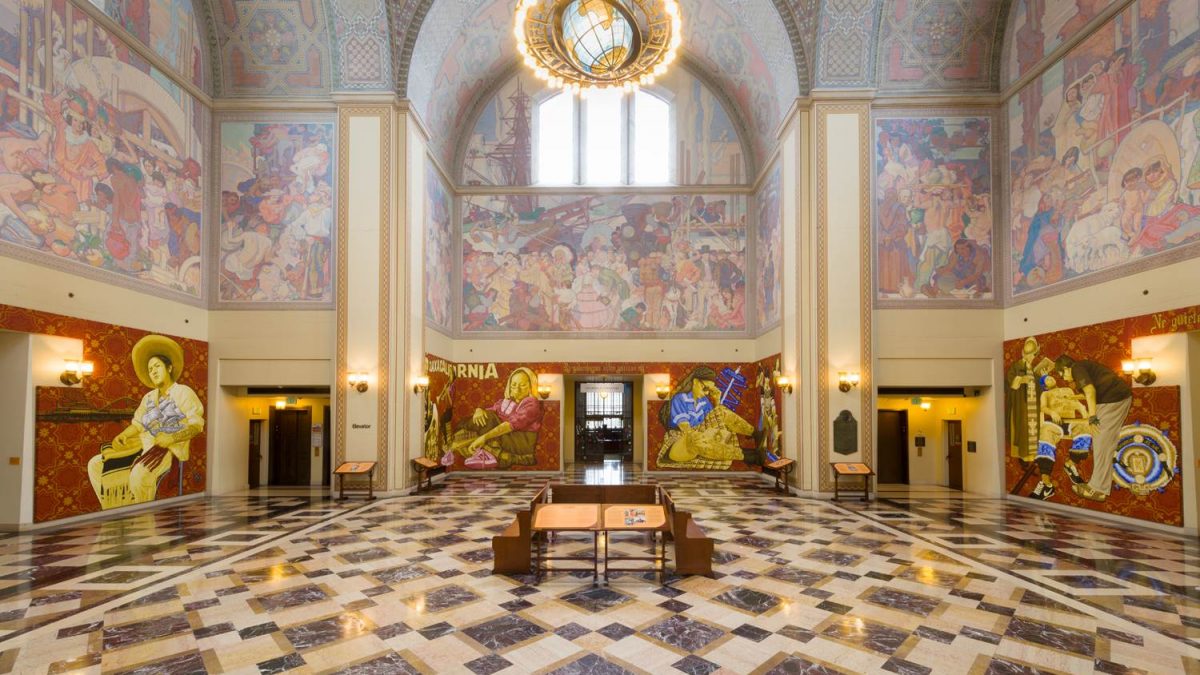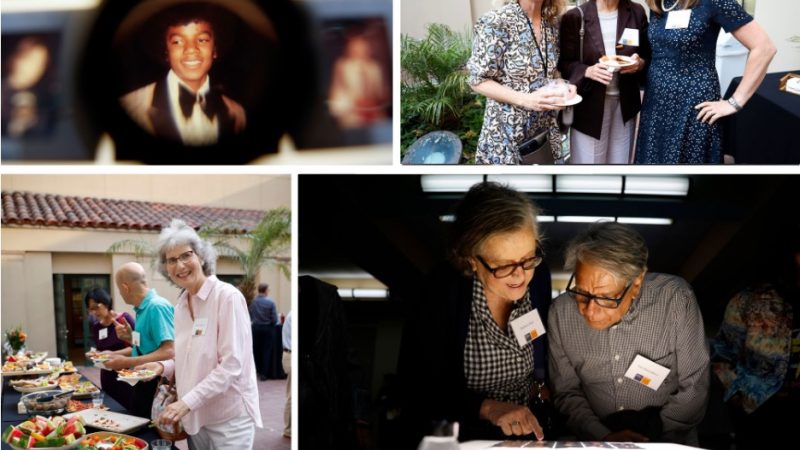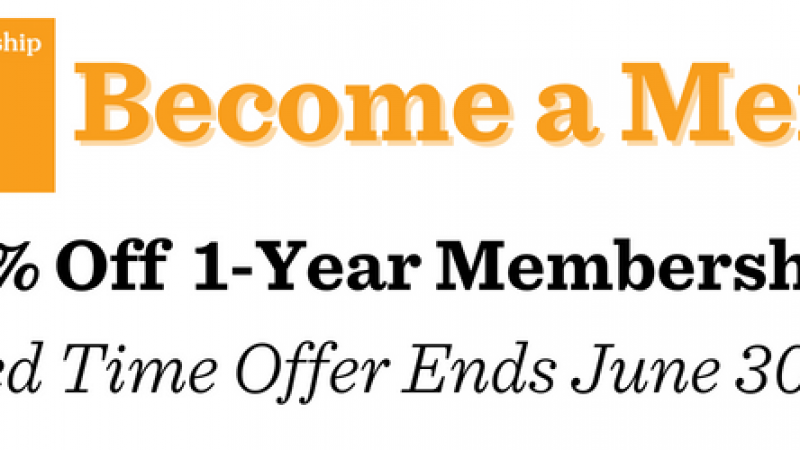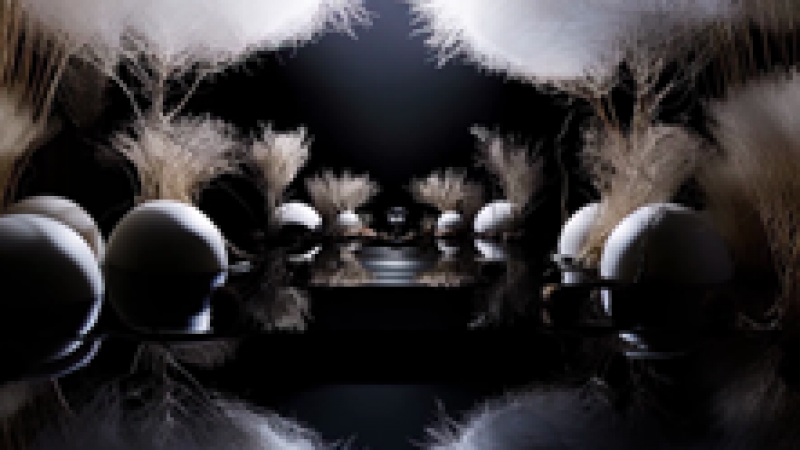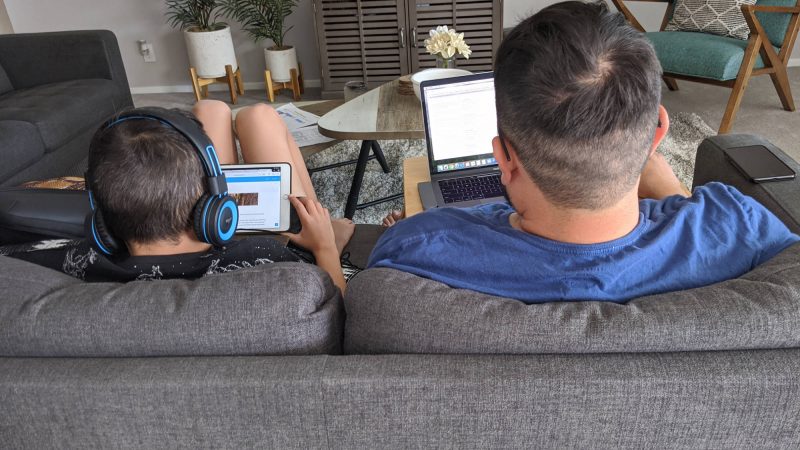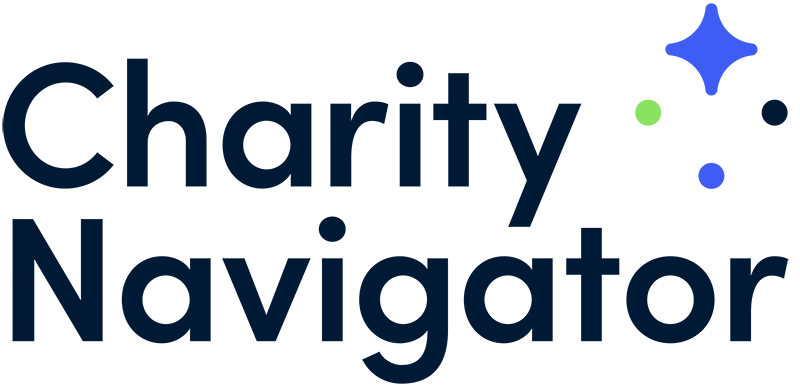This month the Los Angeles Public Library is celebrating Latino Heritage Month, and it’s especially timely as a new exhibition at Central Library recently opened to the public as part of the city-wide Getty initiative PST:LA/LA, a far-reaching exploration of Latin American and Latino art in dialogue with Los Angeles. Visualizing Language: Oaxaca in L.A. illuminates the diversity of L.A.’s history, culture, and identity by offering a fresh narrative that focuses on the indigenous Zapotec cultures of Oaxacan communities. The exhibition is anchored by a series of eight larger-than-life murals by the Oaxacan artist collective Tlacolulokos in the Central Library’s Rotunda that are in juxtaposition with the existing 1933 Dean Cornwell murals that tell a more traditional history of California’s colonization.
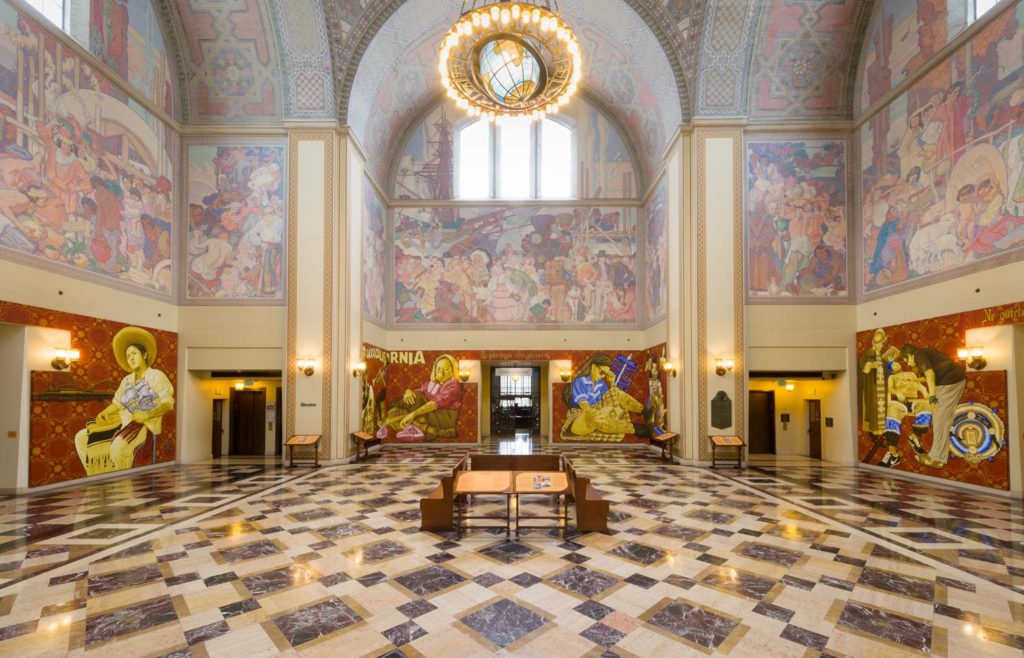
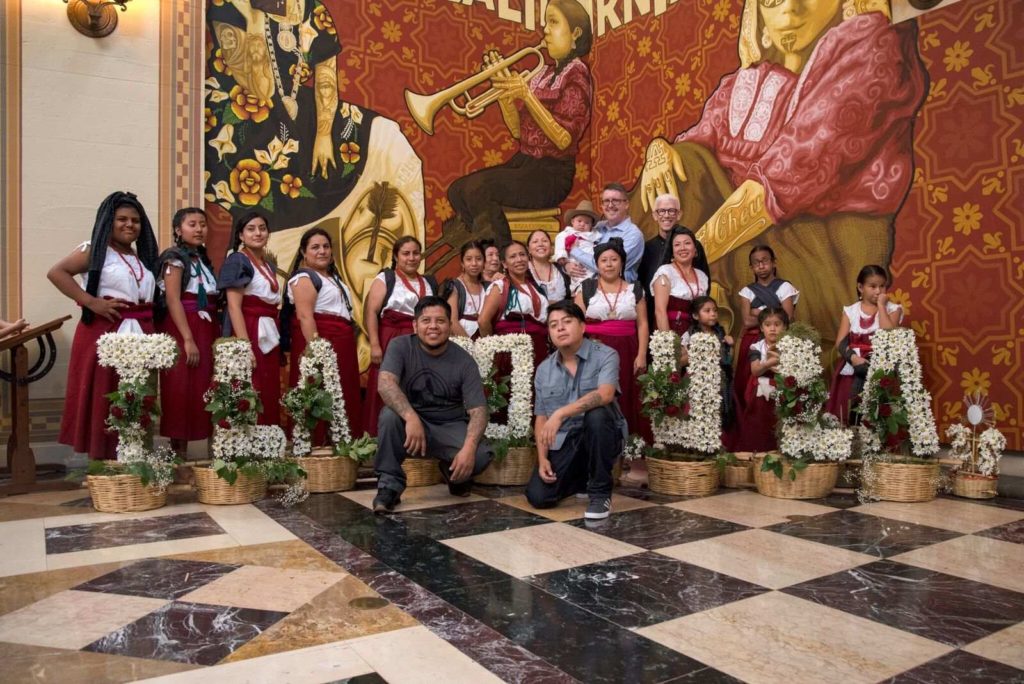
Following the opening festivities at Central Library, we caught up with Amanda de la Garza Mata, the curator of the exhibition. De la Garza Mata, an adjunct curator at the Museum of Contemporary Art (MUAC) in Mexico City, had previously curated a show with Tlacolulokos in Mexico, but Visualizing Language marks their first collaboration in the States. Three years in the making, we asked De la Garza Mata about finally seeing this boundary-pushing project come to fruition and how the public library played a crucial role in creating space for this multi-cultural narrative of Los Angeles.
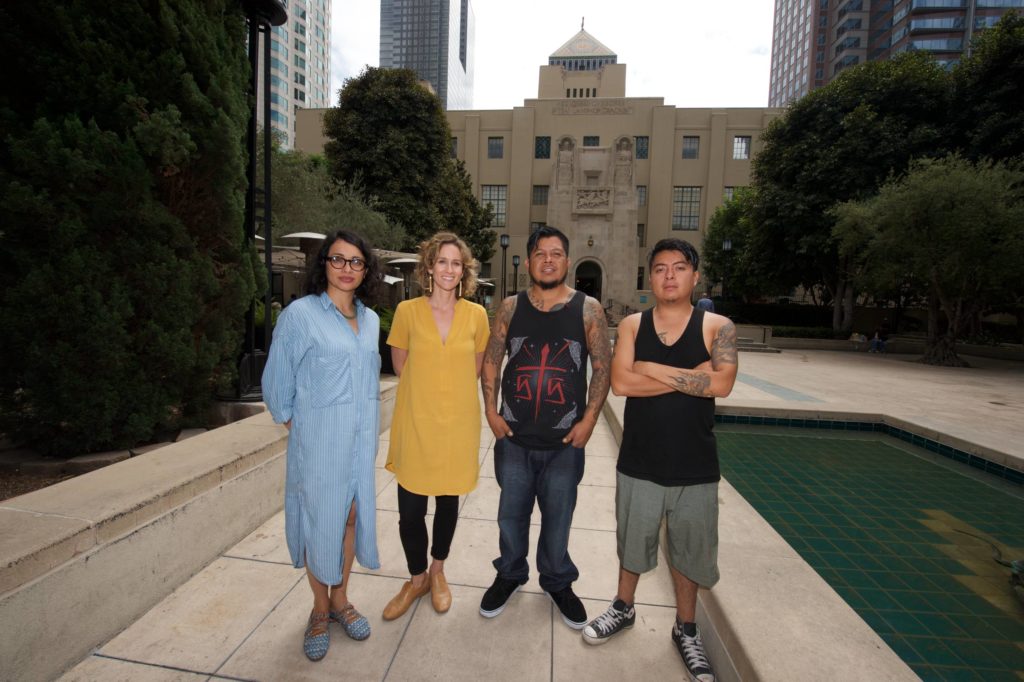
After months and months of preparation, what was it like for the exhibition to open to the public?
De la Garza Mata: The works are really engaging with the people who go to the Library—and not just necessarily to the see the murals, but all the Library users who may encounter the murals by chance. We have already experienced so many positive reactions from people from the community. People are seeing themselves represented by the murals, or they are feeling empathy for the struggles the murals represent in relation to migration and other aspects of migrant communities.

Public art and murals have a long tradition in the art world. How do you think this project has re-imagined the role of public art?
De la Garza Mata: The Rotunda’s Dean Cornwell murals embraced a very official telling of the history of colonization. The Tlacolulokos murals depict a very different history—history from a community whose voice has never been heard in this way before. They’re not trying to represent a unified history where everyone feels attached to it or represented by it. Now in the Rotunda, you can see the differences in which people are portrayed in these two distinct murals such as the way women or indigenous people are portrayed, and that is the turning point in terms of public art—the possibility of public art that does not reproduce an official narrative around history or identity.
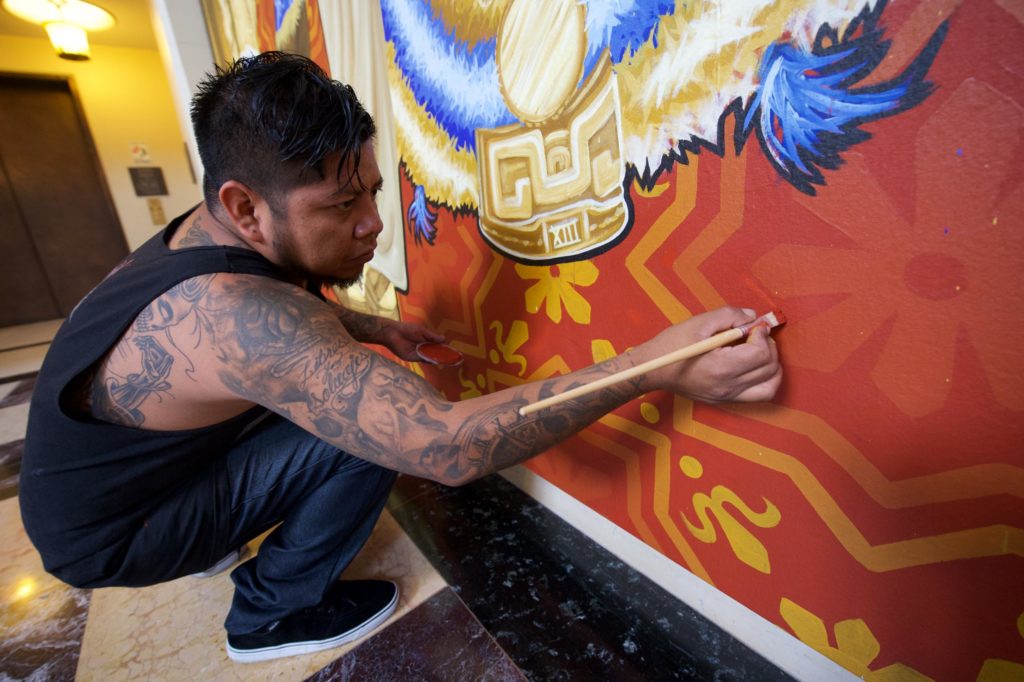
Part of Tlacolulokos’ objective as artists also is to promote empowerment, which directly connects to the mission of the public library to empower people by providing them with tools and resources. How do you see this shared sensibility represented in these murals?
De la Garza Mata: The artists understand the importance of the circulation of knowledge as a form of empowering people. In the murals you can see how they portrayed the importance of books, but not only books in the traditional sense, but the knowledge that comes from oral traditions, music, poetry, and other arts. One of the key points of the murals underscores how important it is to understand where you come from and how sometimes your cultural identity can be taken from you, for example, through the hardships of migration or being assimilated to a new culture.
Creating an alternate narrative is part of reclaiming one’s culture. How do you see the community engaging with their culture differently through the murals?
De la Garza Mata: There was a group of students from Mexican backgrounds who encountered the murals and they were very emotional about them. One student said that he felt that the boy in one of the murals was him—a young kid who had been excluded because of his origins and had suffered the consequences of migration. He represents someone who is trying to overcome struggles to take a different path than is dictated by marginalized groups.
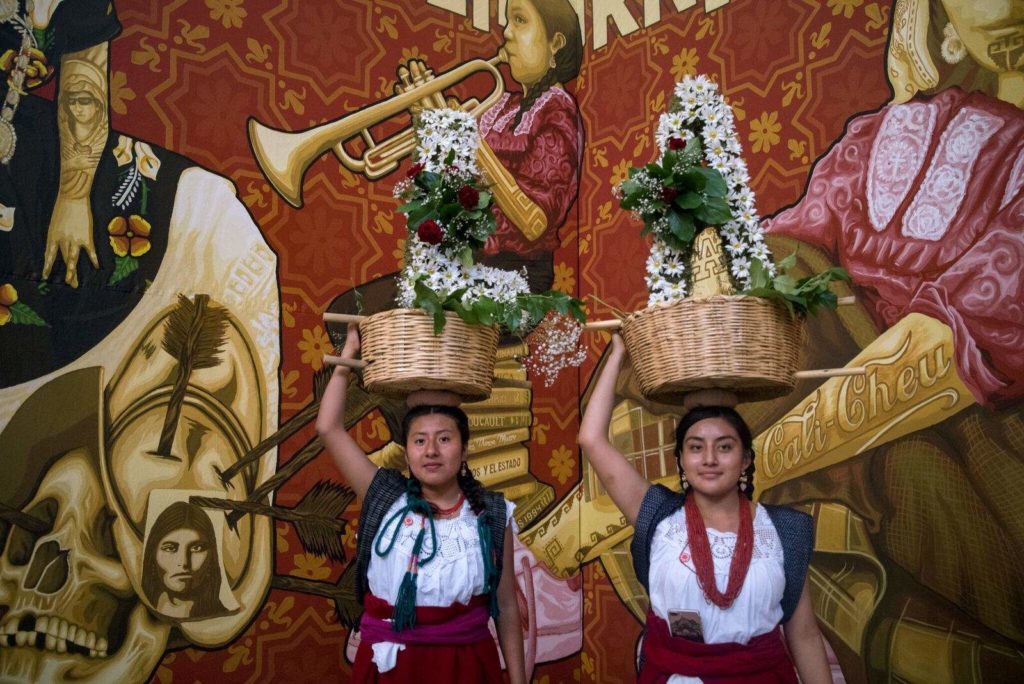
It’s currently Latino Heritage Month. Why do you think it’s important to celebrate culture in these broader ways?
De la Garza Mata: I believe that recognizing our cultural differences makes the city of Los Angeles a stronger city because it’s not differences that necessarily separate us, but that we don’t understand that each community has a different experience. Knowing peoples’ histories, knowing where they come from, knowing our neighbors and the people we interact with daily, also gives us the possibility to understand them in a different way, to see the similarities between our communities in order to understand how we can live together. This is a question that is not evident: how can we live together with so many backgrounds and heritages? I believe there is an opportunity through dialogue. We all have a profoundly deep need for a sense of belonging and being part of a community.
Visualizing Language: Oaxaca in L.A. is a collaboration between the Los Angeles Public Library and the Library Foundation as part of the Getty’s PST: LA/LA initiative. From now until January 31, the exhibition will be open to the public at Central Library along with a series of 70+ special programs at branch libraries across the city. Learn more about these programs, including guided tours of the exhibition, at http://oaxaca.lfla.org/.
Save
Save
Save
Save
Save
